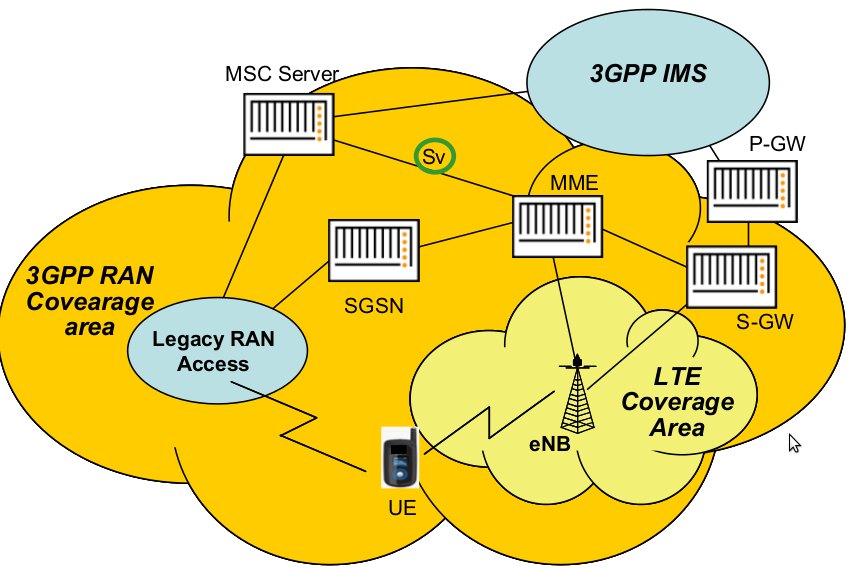Rollout of LTE over a legacy 2G/3G network for IMS-based VoIP service using Single Radio Voice Call Continuity (SRVCC).
Single Radio Voice Call Continuity (SRVCC) can simplify rollout of a new LTE network consider an operator who has decided to move voice services to VoIP over IMS in conjunction with the deployment of an LTE access network. In the absence of other options, this operator would need to provide ubiquitous LTE coverage on day 1 to have a competitive VoIP service. However by using inter-technology mobility and a new functionality called, Single Radio Voice Call Continuity (SRVCC) a less ambitious, more risk-averse rollout plan could be followed.
SRVCC provides the ability to transition a voice call from the VoIP/IMS packet domain to the legacy circuit domain (the ability to transition from the circuit domain to the packet domain is not addressed in the current generation of LTE standards). Variations of SRVCC are being standardized to support both GSM/UMTS and CDMA 1x circuit domains. For an operator with a legacy cellular network who wishes to deploy IMS/VoIP-based voice services in conjunction with the rollout of an LTE network, SRVCC offers provides their VoIP subscribers with coverage over a much larger area than would typically be available during the rollout of a new network.
Single Radio Voice Call Continuity (SRVCC) Functionality
- As an SRVCC-capable mobile engaged in a voice call determines that it is moving away from LTE coverage, it notifies the LTE network.
- The LTE network determines that the voice call needs to be moved to the legacy circuit domain.
- It notifies the MSC server of the need to switch the voice call from the packet to the circuit domain and initiates a handover of the LTE voice bearer to the circuit network.
- The MSC server establishes a bearer path for the mobile in the legacy network and notifies the IMS core that the mobile’s call leg is moving from the packet to the circuit domain.
- The circuit-packet function in the IMS core then performs the necessary interworking functions.
- When the mobile arrives on-channel in the legacy network, it switches its internal voice processing from VoIP to legacy-circuit voice, and the call continues.
- If the legacy circuit network also has an associated packet capability and is capable of supporting concurrent circuit/packet operations, the subscriber’s data sessions can be handed over to the legacy network in conjunction with switching the voice call from the packet to the circuit domain.
- In this case when the voice call finishes and the mobile re-enters LTE coverage, these packet sessions can be handed back to the LTE.
SRVCC architecture with a 3GPP circuit domain

When Single Radio Voice Call Continuity is applicable?
The success of, and correspondingly the need for, SRVCC will be largely determined by operator’s long-term business plans for LTE. If operators look to limit LTE deployments to high traffic areas and at the same time wish to transition voice service in those areas to VoIP then SRVCC is exactly what they need.
If on the other hand operators do not plan to migrate their voice service to VoIP then SRVCC is not for them. If an, operator does plan to migrate to VoIP and also plans to roll out ubiquitous LTE coverage, then the question of whether or not to adopt SRVCC is more complicated. While SRVCC does not require modifications to what is certainly the operator’s largest legacy investment, the RAN, it does require a significant modification of the operator’s legacy core and also requires full deployment of IMS circuit-packet continuity services. Given the cost of these changes, deployment of SRVCC purely as an interim measure to allow early rollout of VoIP-based services may not make financial sense.
